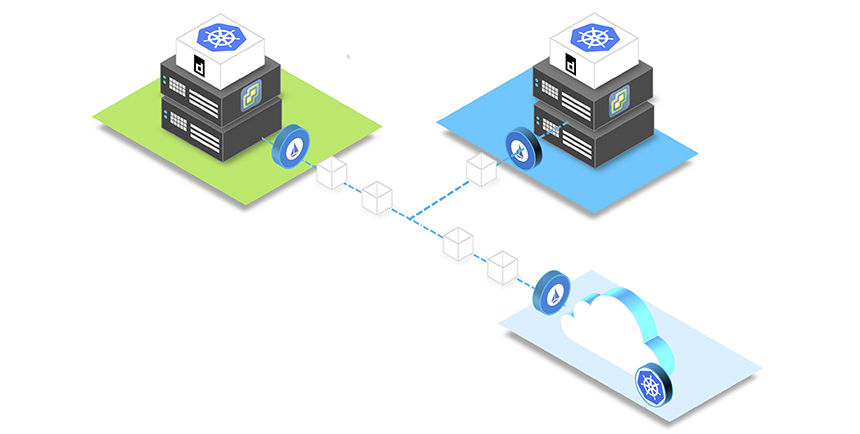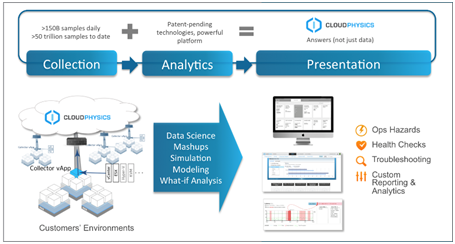On September 18th – 19th, the Google Cloud Summit 2019 will be held at the International Convention Centre (ICC), Sydney. Will you be there? In 2018, Oreta showcased the hybrid container deployment models using Google Kubernetes engine, Istio and Cisco container platforms. In 2019, we are taking it one step further.
At this year’s Summit, we will take you on a Journey to Cloud using live demonstrations and real-life scenarios. You will learn about the power of Cloud Physics – a tool that provides extraordinary visibility into your environment and helps remove the blockers to successfully adopt Google Cloud.
You will be able to see first-hand the simplicity and flexibility of using various migration tools, and how virtual machine workloads can move from another cloud, or on-premise VMware based infrastructure, to the Google Cloud Platform (GCP).
Furthermore, you’ll have the opportunity to observe how services, such as Migrate for Compute Engine and Migrate for Anthos, work to move and convert your workloads from your on-premise environment directly into containers in Google Kubernetes Engine (GKE).

Diagram 1: Journey to Cloud – Assessing, Migrating and Modernising
In this blog, we provide a brief overview of what our focus points will be at the Summit and answer several important questions about migration, including:- Why do we need to understand the reasons for migration?
– Why do we need to quantify the cost of a new cloud model?
– What tools can we use to review the current and future state of every workload within our business, and ensure we make the most suitable and cost-effective decisions regarding what models and features we require? – How can we continue to modernise our IT landscape?
Why do we need to migrate?
Google Cloud Platform (GCP) offers low costs and unique features that make migration very compelling. Unfortunately, many of the processes, calculations, and how-tos are beyond the experience of most organisations. It often is not as simple as a “lift-and-shift” effort. To truly succeed at migration, we need to step back and clearly define and evaluate the purpose and process.

Diagram 2: Migration is not as simple as just a ‘Lift and Shift’.
Assessing: Discover / Assess / Plan Design
Before beginning the assessment process, we need to understand ‘Why’ we are migrating and ask ourselves the following questions:
1. What do we think cloud computing can offer the business, that we do not have today?
2. Do we want to improve our flexibility, including the ability to expand and contract instantaneously without incurring increased capital expenditure for new resources?
3. Do we need particular services that cannot be implemented on-site, such as disaster recovery, security or application mobility?
4. Is the goal to differentiate the business to gain a competitive advantage, or to focus more on collaborative integrated solutions with preferred partners?
Before deciding which workloads should move to the cloud, we need to determine the purpose of the migration and what we want to achieve by this transformation. In fact, defining the purpose of the migration can be as critical as designing the actual platform.

Diagram 3: Defining the purpose of the migration can be as critical as designing the platform.
Migrating: Quantify the cost of the new cloud model.
After you have defined the purpose of migration, you would typically want to quantify the cost implications of the new cloud model. The three main factors you will need to consider are:
1. Differing configurations, commitments, and choices of which workloads to move,
2. The process by which we select and exclude workloads in cloud migration,
3. What workloads will migrate to the new cloud? Selecting all workloads in an environment is typically not a wise choice, especially as the effort to quantify costs per VM can be daunting.
Without a solid tool to review the current and future state of every workload, most organisations are not equipped to make the most cost-effective decisions on what models and features are best to use.
At Oreta, we use CloudPhysics to select and exclude workloads. The tool enables visibility into all workloads and includes tagging and exclusion functionality. CloudPhysics also gives you the ability to conduct rightsizing, which can add further savings to the process.

Diagram 4: Cloud Physics is a solid tool to review the current and future state of every workload.
Modernising: A top priority in the IT landscape
For businesses across the world, the ability to modernise their IT landscape is a top priority. As a Google premier partner, Oreta has been working with Google’s migration tools to support customers during their ‘Journey to Cloud’, and achieve their objectives in modernising.
At the summit, we will demonstrate several of Google’s latest offerings including;
1. “Migrate for Anthos”, which enables you to take VMs from on-prem, or Google Compute Engine, and move them directly into containers running in Google Kubernetes Engine (GKE),

Diagram 5: Migrate to Anthos’ is one of Google’s latest migration tools Oreta will be showcasing.
2. “Migrate for compute engine”, which allows you to take your application running in VM’s from on-prem to Google Compute Engine, and caters for;
– Fast and easy validation before you migrate,
– A safety net by fast on-premises rollback,
– Migration waves to execute bulk migration.

Diagram 6: Migrate to Compute Engine’ is one of Google’s latest migration tools Oreta will be demonstrating.
The Google Cloud Summit in 2019 is set to be better than ever. We hope this short glimpse into what Oreta will be showcasing has inspired you to come along, learn about some of Google’s latest offerings and enjoy our live demonstrations.
If you haven’t registered to attend the Summit yet it’s not too late. Simply register here.
If you are unable to attend the Summit but would like more information on the above, or any other service Oreta provides, please phone 13000 Oreta or contact us here.

